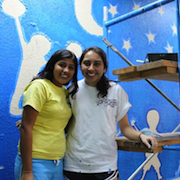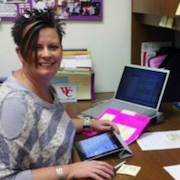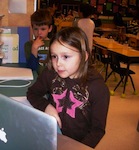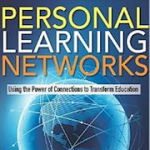 We launched PLP’s Voices from the Learning Revolution blog in March 2011 with a welcome from PLP co-founder Sheryl Nussbaum-Beach that explained our purpose this way:
We launched PLP’s Voices from the Learning Revolution blog in March 2011 with a welcome from PLP co-founder Sheryl Nussbaum-Beach that explained our purpose this way:
We’ve titled this group blog “Voices from the Learning Revolution” not because our bloggers are necessarily revolutionary leaders — but because they are leaving behind outdated practices and mindsets and shifting toward the kind of connected, digitally infused teaching and learning that we know our 21st century students need.
This Easy Reference Index highlights posts 66-92 and continues our engaging mix of voices: classroom teachers, school-based leaders, district visionaries and other educators who support the deep learning practices (for students and professional educators) advocated in Powerful Learning Practice communities.
Every post here has some relationship to “the Shift” — the necessary transformation of the education enterprise represented by new technologies, the Internet and the capacity for educators and students to become “connected” learners. These stories are intended to provide ideas and inspiration — and also reassurance and a sense that no one is alone in doing this important work.
As always, thanks to everyone who has commented, tweeted or re-published the work of these thoughtful and articulate educators.
You can browse all our posts here:
Easy Reference Index: Voices Posts (1-29)
Easy Reference Index: Voices Posts (30-65)
Easy Reference Index: Voices Posts (66-92)
 92. Chinquapin Prep: The Revolution Continues
92. Chinquapin Prep: The Revolution Continues
Susan Lucille Davis
Chinquapin Prep was founded in the belief that with hard work and determination, students could reap the benefits of a quality education, attend college, find meaningful work that would allow them to show the world what children from poverty – black, Hispanic, and white — could achieve, and produce citizens who could give back to the communities from which they sprang. Today, Chinquapin’s students are 21st century learners, prepared to thrive in a challenging global community. Read more
91. The Case for Cultivating Cultural Awareness
Lyn Hilt
Sometimes students, parents, teachers, and administrators are comfortable living in the shells of their own existence. They’re satisfied with the status quo, choose to interact with those from the same religious backgrounds, cultural heritage and political affiliations. Sometimes they consider the alternative views of others to be wrong, not just different. From an educational perspective, this is downright dangerous. We have a responsibility to ensure that our students develop cultural awareness and engage in acts of citizenship, not only within our schools and surrounding areas, but as active members of the global community. Read more
90. Can Learning Be Engaging AND Rigorous?
Chris Preston
Busy classrooms with engaged students don’t automatically equal high achievement scores. It’s our job to connect the two. I’ve been in those revved-up classrooms where some students in one corner of the room might be discussing the merits of a court case while students in another corner are skyping with a storm chaser while he is getting ready for a chase. It’s quite an experience. However, it’s a moot point to the leaders of the school district if test scores aren’t where they want or need them to be. Read more
89. Cakes, Snakes and Boxes: Passion-based Learning & Early Literacy
Kathy Cassidy
I have wondered for a long time how passion and project based learning would change my primary classroom. I have read with fascination the blogs of teachers who made this shift, but I have yet to find an example of a primary teacher sharing this change. Having an entire class of pre-readers and writers in your classroom alters the playing field for exploring your passions. This year, I decided to find out for myself what the difference would be in my grade one learning space. Read more
88. Why Science Teachers Should Write
Marsha Ratzel
This article, reprinted with permission, appears as part of the “Why I Write” celebration, sponsored by the National Writing Project, and taking place this week across the nation. Science and math educator Marsha Ratzel, who writes regularly for PLP’s Voices from the Learning Revolution group blog, was one of several teachers asked to submit essays for the NWP project. In her piece, Marsha explains why it’s so important that students write as a way to learn science—and why science teachers should write as well. Read more
 87. Teaching & Writing in the Real World
87. Teaching & Writing in the Real World
M.E. Steele-Pierce
My colleague Tanny McGregor works daily in the Dept of Teaching & Learning of the West Clermont (OH) school system. She’s also the author of the best-selling “Comprehension Connections” and a sought-after speaker and professional developer. “If I want my writing to be authentic,” she says in this interview, “if I want it to matter, then I need to be planning lessons, modeling lessons, reflecting upon instruction. It’s too easy to forget what it’s like to be in the classroom.” Read more
86. What Do Students Want?
Ann Michaelsen
Recently a local news reporter called me and wanted information for an article she was writing. The proposition underlying her planned article was that “students teach teachers” these days, because they know more about technology and social media than the adults tasked to instruct them. Are we really so sure about that? Read more
85. It’s a Vision Thing: How Steve Jobs Transformed My Life
Ed Allen
The accessibility that is built into Apple products has changed not only my working and personal life, but the lives of millions of people with vision impairments. The fact that I can get up each day, check my mail, visit my personal learning network on Twitter, send and receive a text message, check the score of a game…means that for me, and people like me, everything has changed. And Steve Jobs made this possible. The impact of it all cannot be overestimated. Read more
84. Five Roles of the Inquiry Teacher
Shelley Wright
My English class is currently in the midst of learning about modern-day slavery. This past week I learned how crucial the role of the teacher is in the inquiry classroom. In fact, during the course of the week, I came to see that an inquiry teacher has at least five roles to play in this exciting, sometimes frustrating, and always unpredictable process. Read more
 83. Virtual Collaboration: What’s a Primary Teacher to Do?
83. Virtual Collaboration: What’s a Primary Teacher to Do?
Kathy Cassidy
When I talk to other teachers about the benefits of student collaboration, often their biggest question is: How do I find other classrooms to collaborate with? If you are already connected with other educators through social media, this part seems easy, but if you are just beginning your connected journey, it’s a very real problem. If you’re still a little short on virtual teacher colleagues, I’d like to suggest three ways you can begin to connect. Read more
82. VOICES Interview: The Digital Age Dawns Slowly in the Rural Delta
John Norton
In this interview, national teacher leader Renee Moore reflects on the 21st century learning challenges in rural America — and in particular, in the Mississippi Delta where she teaches. “Technology access for the students in our public schools ranges from the sublime to the ridiculous,” she says, but “too many schools are using what computers and Internet access they do have to provided computer-assisted remediation drills for students in preparation for their state tests.” Moore identifies 5 actions that federal and state leaders could take to improve the chances for rural students to become connected learners. Read more
81. Connected Coaching: Simmer & Serve
Lani Ritter Hall
While I was washing the pot in which my spaghetti sauce simmered to take on all its goodness, similarities to our Powerful Learning Practice Connected Coaching pilot struck me. That experience was downright extraordinary too. And the ingredients were topnotch. Read more
80. Teaching by Getting Out of the Way
Marsha Ratzel
I’ve always done inquiry science, but it’s been more teacher-directed than I wanted. Over the summer I took an e-course in “Unleashing Student Passion,” hoping to find a better approach. I needed to stop holding students back from becoming the learners they will need to be as they grow up. I have always helped students learn the science and be curious. But I knew it was time to take another step, to help the kids in my classroom kindle their own passion for learning. Read more
79. Grading – What Is It Good For?
Patti Grayson
The more I move into 21st century tools and teaching practices, the harder time I have with our current grading system. The more opportunity I give students to work collaboratively, experiment, and pursue their passions, the harder it is to assign grades to this kind of learning and growth. Our standard “letter grade” system does not encourage learning. It does not encourage students to challenge themselves. Does this seem right? Read more
78. Should Teachers Friend Their Students?
Bud Hunt
One of our many jobs as teachers is to keep a professional separation between who we are and what we do. When we are doing our best, we are managing that professional distance in thoughtful and productive ways. In social networks, this looks like being present, being thoughtful, and being intentional in ways that do not confuse our teacherness and our friendness and help our students understand the difference between the two. Read more
77. Global Learning: The Primary Way
Kathy Cassidy
In our primary classroom, my students blog and comment on the writing of other students a world away. We skype with kids from Down Under, talk with experts about the subjects we’re studying, and used wikis to “crowd-source” all kinds of interesting information. We are fearless. We never say, “Oh, we can’t possibly do that — we’re just first grade.” Read more
76. The Power of e: Moving toward Collaboration and Connectedness
Sister Geralyn Schmidt
A small pK-12 Catholic school, founded in 1859, is discovering the power of eCollaboration among its faculty, and most of all, its students. Students publish stories they write online; they produce animations; create book trailers; use SMART response systems to share knowledge about specific topics within the curriculum; construct new planets within far off solar systems and describe their features; and edit and upload their multimedia and still images for parents and other students to see.” Read more
 75. In Education, World Class Technology Use Begins with Personal Learning Networks
75. In Education, World Class Technology Use Begins with Personal Learning Networks
Ann Michaelsen
Last week I received this question in email: “Do we have any model schools in Norway that could inspire ministers of education and help them promote the use of ICT in their own countries? The examples given are expected to be ‘world class’.” My answer is, regretfully, no.Although Norway has world class equipment, both hardware and software, the way we use what we have is not world class. Traditional classrooms with traditional teachers and students are the norm. But I accept the challenge to create this model in my school. Read more
74. Inquiry Learning: This Isn’t Scary at All
Shelley Wright
I have never had students work so hard to solve a problem and fail so badly. And that’s not unusual in science. For the first time in my teaching, I had meaningful conversations with my students about the high failure rate of real scientific experiments and the tenacity it takes to do scientific research. Failing isn’t a bad thing. It’s one experiment closer to finding the answer. Read more
73. Thanks to our Faculty Ning, We’re Collaborating Like Never Before
Patti Grayson
The Ning has connected our faculty in ways we never imagined. We wanted our teachers to connect and share, and share they did! As we got to know each other better, we began to feel a greater sense of community and common purpose. Our faculty can now easily collaborate on lesson plans and community service projects across divisions. They readily share ideas and resources. We now have a virtual community that parallels our physical community, and its powerful anytime-from-anywhere communications capabilities make us feel closer together than ever. Read more
72. This School Year — More Woot!
M.E. Steele-Pierce
In an era when teaching as a profession is disparaged, even vilified, I say let there be more leaders who know the power of “Woot.” I don’t know about you, but I cannot remember a time I experienced a standing ovation with hoots and hollers for a central office meeting. Let’s have some of that Woot to lighten the psychological load of tightened budgets, restricted resources, and political heat. Joy, says a teacher on our staff who’s a certified Laughter Yoga instructor, is extremely therapeutic. Read more
71. How I’ll Engage My Students as Learners: Six Ways to Make Connections
Dolores Gende
I believe that every person is unique and every child can learn, but I recognize that students learn best when engaged — where expectations are appropriately challenging within an environment that is both safe and that contributes to the dignity and self-worth of all. I also believe that engagement depends on quality interactions resulting from connections that happen inside and outside of the classroom. Here are some of the Engagement+Connection ideas I plan to use this year. Read more
 70. Mountaintop Learning
70. Mountaintop Learning
Shelley Wright
I wonder what effect our societies’ low expectations of adolescents has on their development? What does it do to one’s identity when often we give our teenagers so very few meaningful roles or real work to do? That the five hours they spend in classes a day often results in rote learning that is frequently memorized the night before an exam and then forgotten. What if instead, high school students spent five hours a day constructing an identity while responding creatively to their moment in history? What if they were told they can change the world now? Read more
69. New Teachers: The Joys & Challenges of 21st Century Learning
Patti Grayson
Is your school not a friendly place for 21st century learning? Don’t lose hope. Stand by your beliefs and remember that it is all about your students. Igniting their passions and teaching them to become connected learners is a gift that will serve them well, no matter what the future brings. Keep finding ways to let students drive their own learning through inquiry and problem solving. Their energy and enthusiasm is contagious, and you will be there to show them that the learning opportunities are limitless. Read more
68. Is Your School or Classroom a Comfortable Place to Learn?
Tim Holt
Prakash Nair asked the audience if THEY’d tried out a student chair lately and wondered if any adult would be willing to sit in such a seat for eight hours at a time? Most in the audience laughed at his question, but it was the laughter of recognition. No way. Why, asked Nair, do the adults get the comfortable chairs, but the kids don’t? Adult chairs are padded. Adult chairs roll. Adult chairs might even have the cool mesh that keeps backs and legs from getting all sweaty. But the learners? Unyielding polypropylene. Read more
67. School Leaders: Meet the Wiki
Sister Geralyn Schmidt
The professional development programs that are essential today need to focus not so much on the hardware and software — what “cool tools” we can use — but on changing how teachers view themselves as educators. It’s not just about teaching the three “r’s” and the content packaged in textbooks. It’s about preparing our students with the skills that they need for the future within a new learning ecology. In a connected world, educators have to think and teach differently. This book adopts that attitude. Read more
 66. Five Reasons Why Our Students Are Writing Blogs and Creating ePortfolios
66. Five Reasons Why Our Students Are Writing Blogs and Creating ePortfolios
Jenny Luca
I work in an Independent School in Melbourne, Australia, and this year we have made a commitment to help our students (grades 7-12) create ePortfolios, using an Edublogs campus as the platform. Here are 5 reasons why we are making student blogging and portfolio development a high priority. The first: These kids need to establish a positive digital footprint. Read more
John Norton
Latest posts by John Norton (see all)
- I'm a "Learner First" in a Whole New World - July 1, 2013
- Hale@home: Easing Student Transitions via Online Learning - May 17, 2013
- Our Top 13 Voices Posts for 2012! - January 1, 2013


Trackbacks/Pingbacks